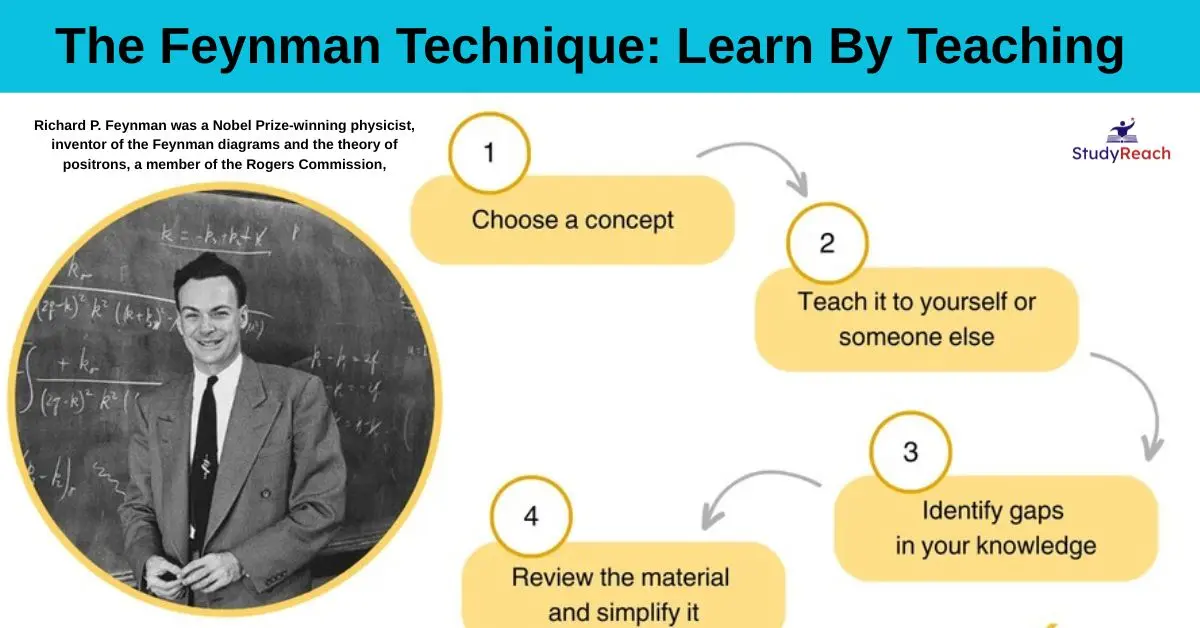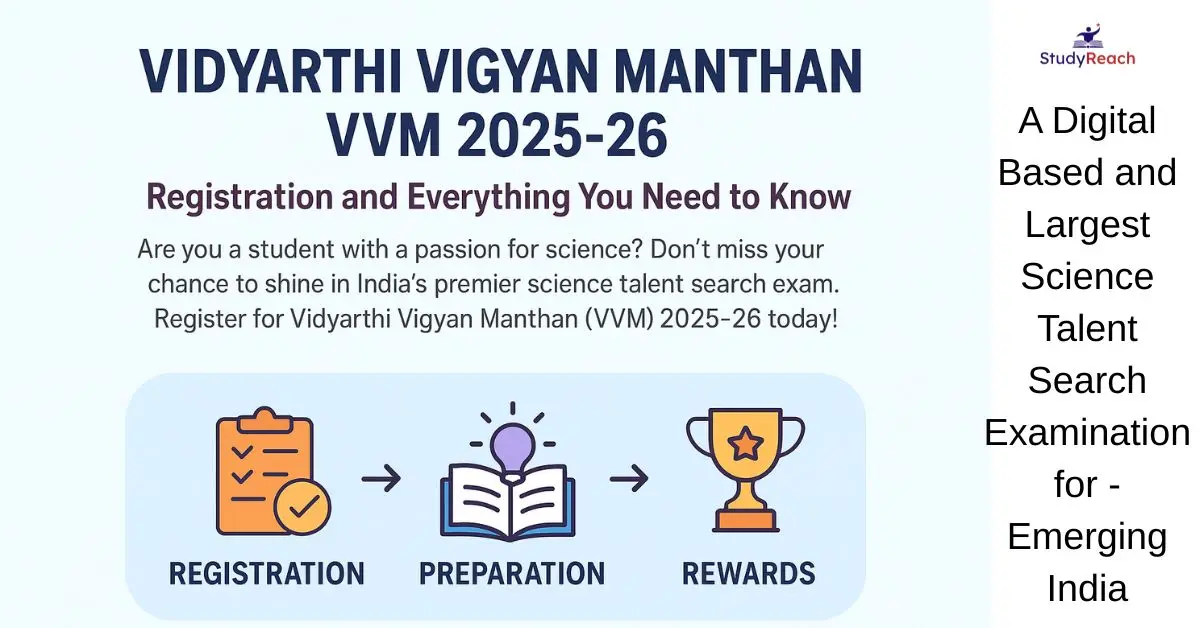The Feynman Technique: Learn By Teaching

Introduction: Why Do We Forget What We Learn?
Have you ever read a chapter, revised it twice, and still forgotten it during the exam? The problem is not how much you study—it’s how you study. One of the smartest ways to truly master any subject is by teaching it. This is exactly what Nobel Prize-winning physicist Richard Feynman believed, and from his approach comes the famous Feynman Technique.
The idea is simple: “If you can’t explain it simply, you don’t really understand it.”
What is the Feynman Technique?
The Feynman Technique, named after Nobel laureate Richard Feynman, is a method to learn and retain information by explaining it in simple terms. Feynman believed that the key to truly mastering any topic lies in your ability to teach it clearly to someone who doesn’t understand it. This technique has been used by students, educators, and professionals across fields to break down complex ideas, identify gaps in knowledge, and strengthen overall understanding.
The 4 Steps of the Feynman Technique
1. Set the Stage
To begin with the Feynman Technique, the first step is to choose a concept you want to understand. Whether it’s a scientific theory or a difficult topic in history, pick something that challenges you. Next, write everything you know about it in your own words. This forces you to process the information, which makes it easier to recall later.
Key Activities:
- Select a concept
- Write down what you already know
- Identify areas of confusion
This process of knowledge review helps uncover gaps in understanding early on.
2. Explain in Simple Words
Once you’ve noted what you know, explain it as if you were teaching it to someone with zero background on the subject. The key here is simplicity. Imagine explaining it to a child or someone entirely unfamiliar with the topic. Break down complicated terms into digestible parts and avoid jargon.
This is the heart of the “Explain Like I’m Five” (Eli5) approach, which is often associated with the Feynman Technique. By using analogies, examples, and relatable language, you bring abstract ideas to life. This step ensures clarity, a crucial part of deep learning.
3. Assess and Study
After you’ve written your simplified explanation, review it. Do you spot any gaps in your understanding? Are there areas where your explanation feels unclear or shaky? This self-assessment will highlight the areas where you need to study more.
To fill in the gaps, refer back to textbooks, research articles, or other resources to gain a clearer understanding. Once you’ve filled the gaps, refine your explanation to be even more concise and straightforward.
4. Simplify and Review
Now that you’ve identified and addressed any knowledge gaps, it’s time to simplify your explanation further. Continue rewriting your explanation, replacing complex terms with simpler language. This iterative process ensures that the information becomes increasingly easier to understand.
Through repeated revisions, you reinforce the material and commit it to long-term memory. The Feynman Technique is not about memorization but genuine comprehension.
Why the Feynman Technique is So Effective
The Feynman Technique works because it forces active learning. By teaching the concept aloud or writing it down, you’re engaging in a process that solidifies knowledge. Here’s why it’s a powerful learning tool:
Enhances Long-Term Retention
Teaching forces your brain to actively retrieve information, strengthening the neural pathways related to that topic. This active recall improves memory retention better than passive forms of learning, like reading or highlighting notes.
Pinpoints Gaps in Knowledge
One of the biggest advantages of the Feynman Technique is its ability to expose areas you don’t fully understand. If you can’t explain something clearly, it means there’s a gap in your knowledge. This realization helps you focus on the specific parts of the topic that require more attention.
Promotes Deeper Understanding
Teaching requires you to distill complex information into simpler terms. This process naturally leads to a deeper understanding of the material, since you’re constantly reinterpreting it in a way that’s easier to communicate.
Using the Feynman Technique offers several advantages:
- Accelerated Learning: You learn faster by teaching and simplifying the material.
- Identifying Knowledge Gaps: It reveals areas where you lack understanding, so you can target your studies more effectively.
- Increased Engagement: Explaining concepts makes learning an active process.
- Enhanced Retention: By teaching, you build stronger mental connections to the information, improving retention.
Related Article : How to Study with SQ3R Method 4 Effective Way to learn
Applications of the Feynman Technique
The beauty of the Feynman Technique lies in its flexibility. It can be applied to a wide range of disciplines and contexts.
Learning for Exams or Tests
Whether you’re studying for the UPSC or a school exam, the Feynman Technique helps you internalize the material effectively. Rather than cramming information, the technique encourages active engagement, leading to better recall during exams.
Professional Development
For professionals in fields that require continuous learning (such as medicine, law, or tech), the Feynman Technique can accelerate your ability to absorb and retain complex knowledge. It can also improve your presentation and communication skills, as you’ll become adept at explaining concepts in layman’s terms.
Everyday Learning and Hobbies
Whether you’re learning a new language, skill, or hobby, the Feynman Technique can aid in breaking down intricate processes into simpler, manageable chunks, making it easier to progress in your learning journey.
How to Apply the Feynman Technique in Different Fields
1. Physics
For example, if you’re learning about Newton’s First Law of Motion, you could explain it in simple terms as: “Things either stay still or keep moving unless something pushes or pulls them.” By simplifying the concept, it becomes clearer and easier to understand.
2. Chemistry
To explain the Periodic Table, you could say: “It’s like a map of all the building blocks of matter, organized by their properties.”
3. Biology
In photosynthesis, plants create their food using sunlight. By simplifying this process into understandable terms, you demonstrate mastery over the concept.
In final words Feynman Technology is : Mastering the Art of Teaching
The Feynman Technique is more than just a learning strategy—it’s a mindset. It emphasizes the value of teaching as a way to deepen understanding. By regularly explaining complex concepts in simple terms, you’ll find yourself learning faster and remembering more. This method empowers you to master any subject by thinking like a teacher, enabling long-term comprehension and success.
1. What is the Feynman study technique?
The Feynman study technique is a learning method that involves explaining concepts in simple terms, revealing knowledge gaps, and filling those gaps through study and refinement.
2. What is Feynman Technique for UPSC?
The Feynman Technique is an effective study tool for UPSC preparation, as it helps candidates break down complex subjects like polity, economics, and history into understandable pieces, improving retention and recall.
3. How to take notes using Feynman Technique?
While taking notes, write in your own words and simplify the material as if you’re teaching it to someone else. This active engagement reinforces your learning.
4. How to teach like Richard Feynman?
To teach like Richard Feynman, focus on simplifying complex ideas, using analogies and examples, and actively engaging your audience by making abstract concepts more relatable.
















1 Comment
[…] Read more on “Feynman Technique” […]